Krishna and Rathyatra Festival in Ancient Egypt?
By Bibhu Dev Misra
An interesting piece of information caught my attention during my journey across the sacred sites of Egypt during early 2010. During the light and sound show in the magnificent temple complex of Karnak, I heard a voice booming over the loudspeakers: “I am Amon-Ra…
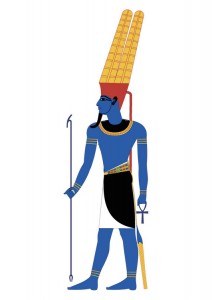
Amon-Ra
The waters of the Nile sprout from my sandals.” This immediately reminded me the Vedic Creator God Vishnu.
In the typical depiction of Vishnu in Hindu iconography, the sacred river Ganges is always shown emerging from the toe of the Vishnu, while in Egypt, we find a very similar imagery associated with Amun. But who was this Amun? I knew that Amun was the presiding diety of Karnak, and he was worshipped there as the Creator God, along with his wife Mut, and his son Khonsu. The next day, while discussing about the light and sound show with my tour guide, he suddenly gave me another piece of information that I was not aware of, and that took me completely by surprise: “Amun was always depicted in funerary art and temple inscriptions with a ‘blue skin colour’ and having two feathers in his headdress.”
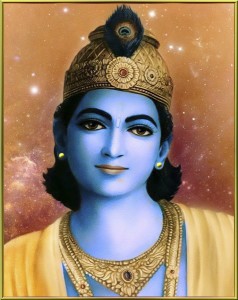
Lord Krishna The Supreme Personality Of Godhead
"Note by Devarsi.. Lord Krishna is described in the Vedas as The Supreme personality Of Godhead"
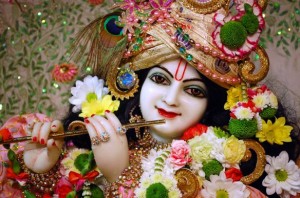
Lord Krishna is The Supreme personality Of Godhead
Current evidence indicates that the construction of the temple complex at Luxor and Karnak may have started as early as the Middle Kingdom (c.2055 – c.1650 BC), although the buildings visible today date from the reign of Amenhotep III (c.1390 – c.1352 BC), the great temple builder of the Eighteenth Dynasty. What could have trigerred his precipitous rise to the head of the Egyptian pantheon from relative obscurity as a diety of the Primeval Ocean? And how did a whole new patheon of deities, along with associated symbolisms, rites and rituals, with gigantic temple complexes dedicated to them, suddenly spring up in Egypt during the Middle Kingdom? I was also taken aback by the descriptions of the annual Opet festival that used to be celebrated in Karnak, during the season of the flooding of the Nile. In this grand festival, the idols of Amun, Mut and Khonsu were placed on sacred boats, which were carried in a splendid, joyous procession down the Avenue of the Sphinxes, along the 2 mile road that connects the temples of Karnak and Luxor.
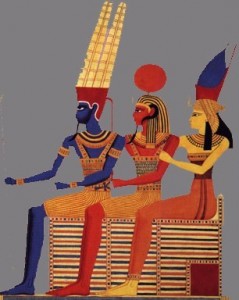
Amun, Mut and Khonsu
The celebrations have been depicted in detail on the walls of the Great Colonnade at Luxor. At Karnak, the idols of the Thebian triad were first ceremoniously washed and magnificently dressed with colorful linen and precious jewelry and placed on sacred boats. The pharaoh then offered his obeisances to the boats, which were then carried by the priests, accompanied by musicians, and soldiers carrying standards decorated with brilliant plumes and streamers. Elegantly decorated horse drawn chariots, would also accompany the procession. Huge crowds of people gathered along the road, blowing trumpets, dancing and singing, clapping, offering prayers, burning incense sticks and generally raising a tremendous din. Nubian musicians and female acrobats entertained the crowd. The boats rested along the way at six way-stations that were built by Queen Hatshepsut. Once the idols reached Luxor Temple, the coronation rites of the king were repeated in a sacred ritual, which effectively transferred the power of divine rulership from Amun to the pharaoh.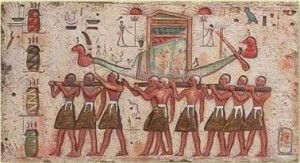 The idols rested in Luxor for a period of time and subsequently came back to Karnak, in another procession along the river Nile. Although the Opet festival was initially celebrated over only 11 days, later it was extended to nearly 24 to 27 days. The festival not only symbolized a restoration of the divine right of the king to rule, but also signified a rejuvenation of the creative forces of the cosmos, through the sacred rituals and boisterous celebrations. Amazingly enough, an exactly similar festival is still celebrated every year in the tiny coastal town of Puri, in the state of Orissa in eastern India, after the onset of monsoon in the month of July. Here, in the yearly Rathayatra festival, the idols of Krishna (or Jagannath), his brother Balaram and his sister Subhadra are carried in three magnificent chariots pulled by thousands of devotees along the 2 km (1.5 mile) road that connects the Jagannath Temple to the GundikaTemple. I had the good fortune of being able to witness this grand spectacle last year. An immense collection of humanity had descended on Puri on this day from all over India. The actual festival, of course, had started nearly two weeks earlier when the idols of Krishna, Balaram and Subhadra were given a ritual bath and redecorated.
The idols rested in Luxor for a period of time and subsequently came back to Karnak, in another procession along the river Nile. Although the Opet festival was initially celebrated over only 11 days, later it was extended to nearly 24 to 27 days. The festival not only symbolized a restoration of the divine right of the king to rule, but also signified a rejuvenation of the creative forces of the cosmos, through the sacred rituals and boisterous celebrations. Amazingly enough, an exactly similar festival is still celebrated every year in the tiny coastal town of Puri, in the state of Orissa in eastern India, after the onset of monsoon in the month of July. Here, in the yearly Rathayatra festival, the idols of Krishna (or Jagannath), his brother Balaram and his sister Subhadra are carried in three magnificent chariots pulled by thousands of devotees along the 2 km (1.5 mile) road that connects the Jagannath Temple to the GundikaTemple. I had the good fortune of being able to witness this grand spectacle last year. An immense collection of humanity had descended on Puri on this day from all over India. The actual festival, of course, had started nearly two weeks earlier when the idols of Krishna, Balaram and Subhadra were given a ritual bath and redecorated.
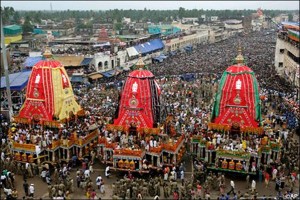
The yearly Ratha Yatra Festival In Puri India
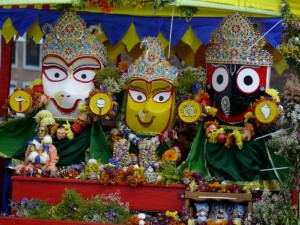
Lord Jagannath (right) Balaram (left) and Subadra
The entire celebration, starting from day of Jagannath’s bathing ceremony, till his return from the Gundika Temple, lasts for 25-26 days, nearly the same as the Opet festival of Karnak and Luxor. The similarities between these two ancient festivals are obvious and striking. There was no doubt in my mind that the Opet festival of Karnak is identical in form and spirit to the Rathayatra festival of Puri. As per Vedic accounts, the festival of Rathayatra has been celebrated in India for thousands of years, although the current Temple of Jagannath only dates from the 12th century CE. The festival has been mentioned in multiple Puranas, which are Vedic historical documents of unknown antiquity. The Skanda Purana states that the first Jagannath Temple was established in Puri in the Krita Yuga, which, as per the currently accepted Yuga Cycle doctrines, began at around 10,900 BC. Since Jagannath refers to Vishnu i.e. the Lord of the Universe, he was worshipped in different forms in the different Yugas. In the Kali Yuga* he is worshipped in the form of Krishna. *( kali Yuga The age of quarrel and hyprocacy )
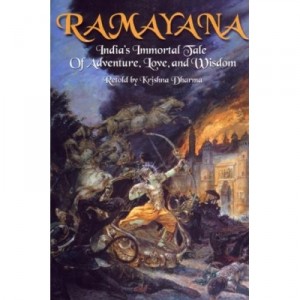
The Skanda Purana also specifies the date of the Rathyatra festival. In many other Vedic documents such as the Narada Purana, Padma Purana and the Ramayana, the virtues of worshipping Jagannath have been extolled. The festival is, therefore, indubitably Vedic in origin. That would imply that this ancient festival, along with the cult of Krishna, Balaram and Subhadra was transferred from India to Egypt, sometime prior to 2000 BC! That is a phenomenal idea. Although we know that Indian traders had extensive trade relations with the first Pharaohs of dynastic Egypt in 3000 BC, and sold them cotton, muslin, spices, gold and ivory, such a major influence of India on Egyptian religious systems has not been explicitly identified by historians till now. Some scholars have, however, pointed out the similarity between the culture of Egypt and Eastern India. Peter Von Bohlen, a German Indologist, mentioned that there are elements of folk art, language, place names and rural culture of Bengal (the state adjacent to Orissa and included in it in ancient times) which have an affinity with their Egyptian counterparts.
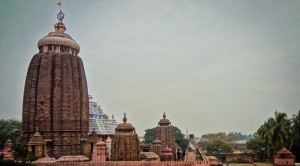
The Ancient City Of Jagannath Puri
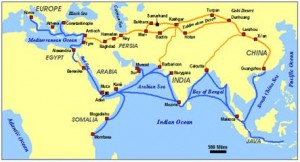
The Silk Road
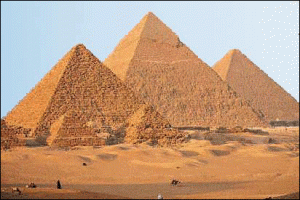
India Is The Land Of The Many Demigods And Krishna Is God Himself.
The Supreme Personality Of Godhead
Many questions are raised here. If Punt is India, then when did the ancient Egyptians migrate to the shores of the Nile from Punt? If we assume that the migration took place sometime around 3000 BC, at the beginning of the ‘Kali Yuga’, then who built the Giza Pyamids? Since the Pyramid complex at Giza has now been dated to around 10,500 BC (Hancock and Bauval), and since this magnificent pyramid complex is entirely devoid of any hieroglyphic engravings or inscriptions, which is very unlike the Egyptian pysche, it raises the question whether the Giza Pyramid complex was built by the ancient Egyptians or by others before them. Is it possible that was it built by a ‘race of giants’ who built similar megalithic structures around the world, including many of them in Mesoamerica? Maybe the arrival of the ancient Egyptians to the shores of the Nile from the distant Punt displaced this ‘race of giants’ and a new civilization was initiated? Whatever be the truth about ancient Egypt, it is clear that we are barely scratching the surface of it in the present times. About the author: Bibhu Dev Misra is a graduate of the Indian Institute of Technology and the Indian Institute of Management and has been working as an IT consultant for more than 12 years. He has deep interests in ancient civilizations, myths, traditions, symbols, religion and spirituality and has travelled to many places of religious, architectural and historical importance.
Bibhu Dev Misra
___________________________________________________________
The Blue-ness of God in Biblical tradition
The Blue-ness of God in Biblical tradition ……The omniscient, omnipotent and omnipresent Father-God of the entire ancient world was most commonly depicted as blue. Thus Jupiter, Zeus, Osiris, Heru and Ammon-Ra (Heru) and Aapa / Nhr (Nilus) were all depicted as blue. The Buddhist Lokesvara is commonly blue in both his two and thousand armed forms. Of course Krishna-Vishnu is blue or blackish, and Rama and Shiva were also sometimes depicted as blue. Even the solar Corn-Boy of the American Hopis was blue with an eyed feather, and he was depicted in his golden sun-circle with eagle feathers protruding from it! Iconographically this has astounding similarities with Egyptian and Near Eastern traditions. When they tried to outlaw the impersonation of God / Zeus in the Greco-Roman world, they forbid the dying of one's skin and tatooing of auspicious marks on one's body / hands and feet! They forbid allowing one's hair to grow long and shaving one's face. They outlawed the wearing of certain gold cloth, a gold crown or the sacred plumes of Shu or Helios. They forbade anyone except the anointed Soter / Savior King to present himself in such a way, or to wear gold armour, ride a white horse, or carry a discus for a weapon! All these things were forbidden, so what did the Supreme Father God in His Basileos sacred king form look like?
long hair (kouros age was before the hair was cut) / eternal youth
no beard / eternal youth
blue skin
auspicious marks
gold crown
sacred feathers
gold armour
riding white horse
carrying discus
= Vasudeva Krishna (Sri Krishna as the Sacred King)
There is some mention of this outlawing the impersonation of Zeus in Robert Graves's multi-volume collection of the Greek myths. A side note to this is the fact that when Zeus was worshiped in his ammonite shila form as Zeus-Petros, and Jupiter was worshiped in His related lapis form, both of these were blue or blue-gray stones. The Sacred King form of the Biblical Supreme Father God was called the Basileos or Rex (regent). Basileos is related to Greek bazodeo and on Bactrian Greek coins, Bazodeo on one side is translated as Vasudeva on the other. (see famous Bactrian era coin, the stater of Vasudeva.) Obviously a rex or regent is a raja (and regina, the feminine 'queen' is rajani or rani) so the Mediterranean incarnation kings were identified with Vasudeva or Sri Krishna as Raja Raja or the King of kings. In fact in the original Greek of the New Testament, Jesus is called Basileos basileos, the 'King of kings' …Vasudeva of the vasudevas (Vishnu of the vasu-devas, or class of good 'gods'). In South Egypt, all of the expansions of the Supreme Deity Wasu Theo were depicted with a 'was' scepter indicating that they were forms of Wasu Deo. In Judaism Wasu Deo was called Toba-Yahu, which is Vasu-deva reversed. Hebrew toba and Sanskrit deva both mean good and beneficent. The English name Tobias is derived from Toba-Yahu.
Secular scholars of religion claim that the commonly blue color of the Supreme Father God was because He was always associated by the ancients with the sky or heavens, in the pair of Father-Heaven and Mother-Earth. Thus usually He was light sky or cloud blue, but sometimes black or very dark blue with His body covered with stars, as in the black and star-covered-bodied forms of Kala Purusha. As Lord of the universe, Lord Jagannatha's body is black, and His dress sometimes covered with a star-like design. In Egypt and the East, Osiris and Kala Purusha were often depicted with black bodies. Of course, when the Sanskrit words for black and blue are confounded, and the icon of the Lord is created according to scriptural descriptions, it may be said that the scriptures describe Him as either blackish or blue-ish. Then the result may be either a black or blue-ish murti (image/icon). The fact that Vaishnavas depict Him either way, without fighting about it, is analogous to the many parallel traditions existing without conflict within Catholicism.
In some Alexandrian Egypto-Jewish and Catholic icons, Jesus and sometimes even Mary is depicted as blue. As God, not man, Jesus was depicted (like Heru, Helios, Osiris, Zeus, Jupiter etc.) as blue. Catholic art historians have explained blue images of Christ as related to the ancient practice of depicting 'Supreme Father Gods' as blue for the sky and heavenly purity. The heavenly or sky Father, consort of Mother Earth, was commonly depicted as blue in the ancient world (see African and New World tribal traditions too). I have viewed hundreds of Catholic icons of Mary, spanning the globe and over 1000 years and I would say that over 90 % of the time in Her colored icons, She has a red or pink inner dress and a blue outer mantle. Of course, Mary's highest most 'intimate' form in relationship to 'Bridal Mysticism' is known by Her mysterious name Rhoda… the Mystical Rose. Her six-pointed star (hexad) is associated with Her symbol as Rhoda but She also has a five-pointed star. In India red is associated with Radha, an internal energy (Shakti), and blue with Durga. A blue (Sanskrit 'nila') flower is associated with Shakti as Durga or external energy. The hexad is associated with Sri Laksmi and the five-pointed star with Durga. In Pure Land Buddhism these two stars also exist and Tara's secret form is symbolized by a red or pink flower.

 Posted in
Posted in 





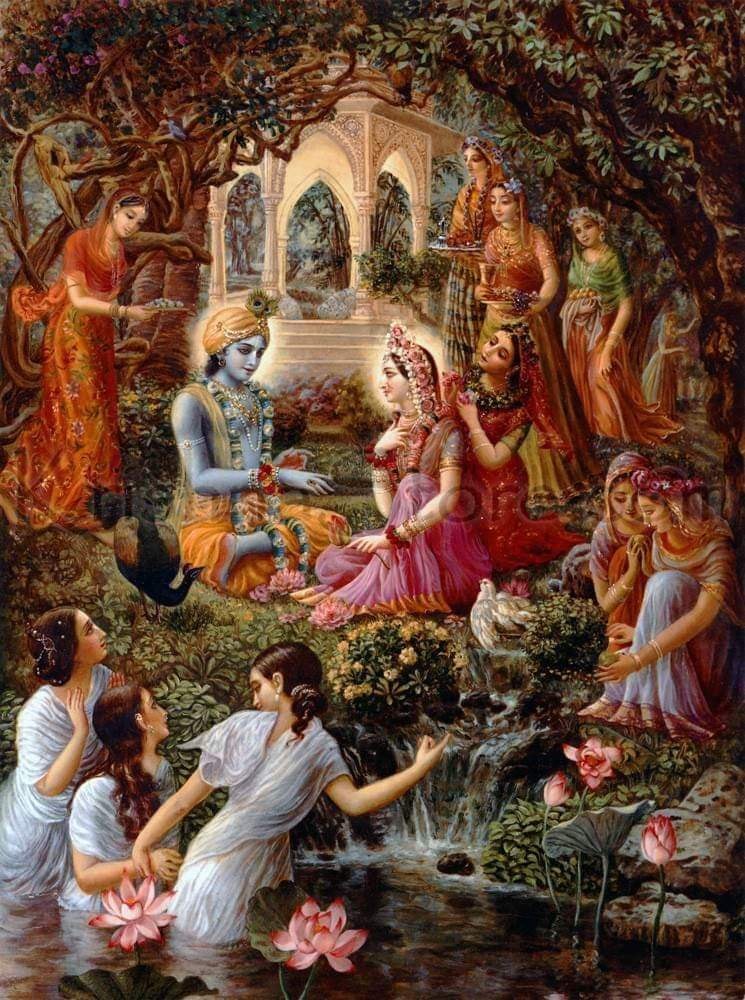
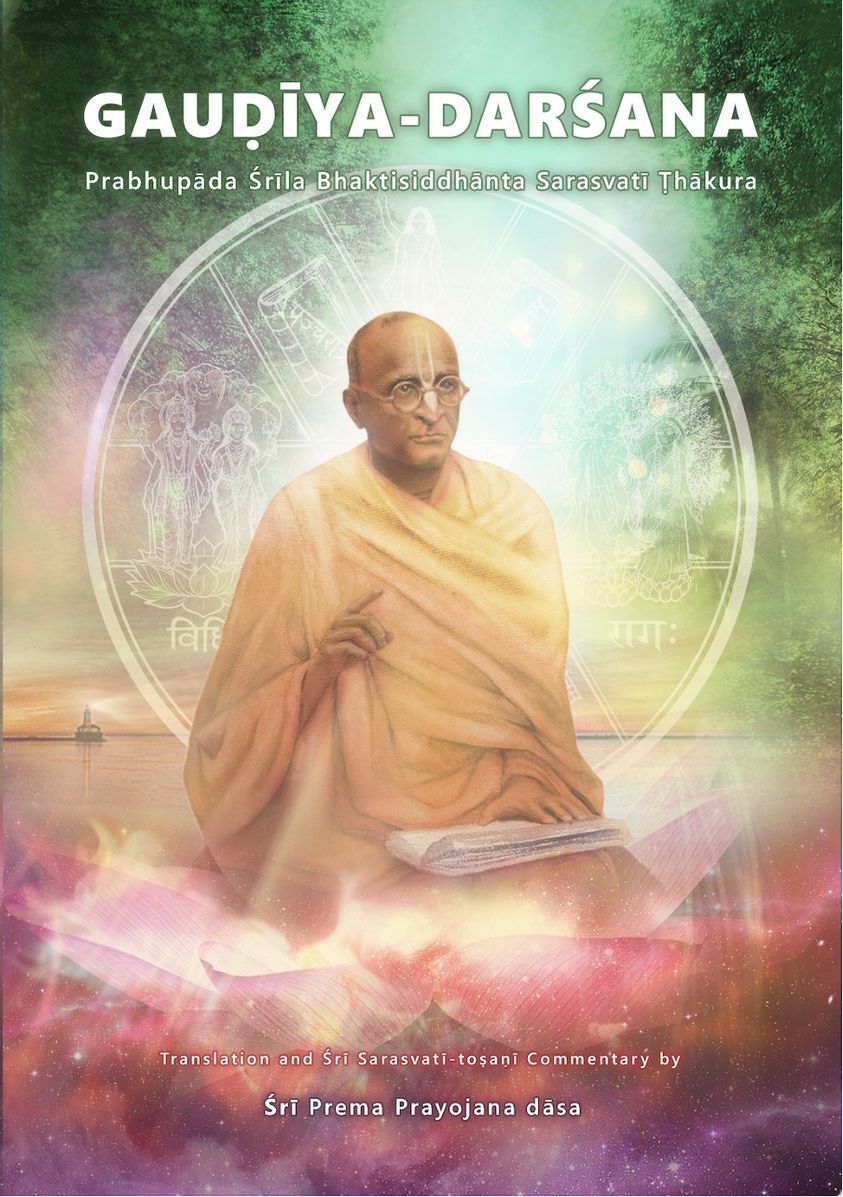

Pranams. All glories to Srila Prabhupada !
A congregational member is visiting Egypt right now , and though I do not think there is any official Hare Krishna Temple in Cairo, are there any Vaisnavas that my friend could meet for association ? Hare Krishna !
Your servant
Gaura dasa
Haribol sorry i never saw your question, I have no idea because we are in the UK
Please accept this free Bhagavad Gita download Courtesy of Isa das prabhu
http://www.purebhakti.com/resources/ebooks-a-magazines-mainmenu-63/bhakti-books/english/32-bhagavad-gita/file.html